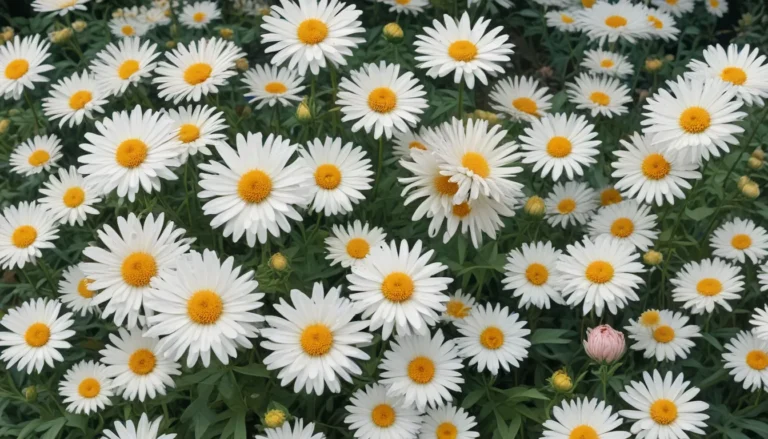How to Grow, Care for, and Enjoy Pawpaw Trees in Your Landscape

Are you familiar with the pawpaw, Asimina triloba? This native North American fruit, known for its tropical flavor and custardy texture, is a unique addition to your home landscape. Forget about the confusion with other tropical fruits like papaya or soursop – the pawpaw thrives in USDA Hardiness Zones 5 to 9, offering an intriguing blend of characteristics that make it a desirable plant to grow.
In this comprehensive guide, we will explore everything you need to know about growing and caring for pawpaw trees. From soil requirements to harvesting fruit, we’ve got you covered. Let’s dive in and discover how you can have your very own pawpaw patch at home.
Introducing the Pawpaw
Before we delve into the specifics of growing pawpaw trees, let’s take a closer look at some interesting facts about this unique fruit:
- It is the largest native North American fruit, reaching up to six inches in length.
- Pawpaw is also known as “Indiana banana,” “Quaker delight,” and “Appalachian banana,” among other names.
- The fruit has a tropical flavor, but it’s essential to consume it with caution due to potential stomach upset for some individuals.
- Pawpaw is part of the custard apple family and offers a nostalgic touch, with old Appalachian songs celebrating its presence in the landscape.
How to Grow Pawpaws in Your Landscape
Soil Requirements
To ensure the success of your pawpaw trees, start by preparing the right soil conditions:
- Moist soil with a neutral to slightly acidic pH is ideal.
- The soil should be organically rich and drain well.
- Consider having your soil tested by the local extension office to determine any necessary adjustments.
Location Selection
Choosing the perfect spot for your pawpaw trees is crucial for their growth and development:
- Opt for a location with full sun for tree growth or partial shade for shrub cultivation.
- Protect the trees from high winds by providing some shelter.
- Pawpaw trees can reach up to 30 feet tall and 20 feet wide, so plan accordingly.
Pollination and Fruit
Decide if you’re interested in growing pawpaw fruit and follow these guidelines for successful pollination:
- Plant at least two different cultivars on your property to ensure cross-pollination.
- Pawpaw trees rely on flies and beetles for pollination, making them self-incompatible.
- Consider manual pollination techniques if needed, such as using a paintbrush.
Quality Plants for Best Results
When choosing your pawpaw plants, keep these tips in mind for optimal growth:
- Wild seedlings are not recommended due to the risk of damage to the taproot.
- Cultivated varieties offer superior characteristics like disease resistance and fruit quality.
- Consider grafting techniques for propagation and ensure you’re getting plants from reputable sources.
Planting Directions
Follow these steps to plant your pawpaw trees successfully:
- Prepare the soil by making it loose and crumbly.
- Plant the trees at least 15 to 25 feet apart for adequate spacing.
- Water thoroughly and maintain moisture throughout the growing season.
- Apply mulch for moisture retention and weed inhibition.
- Monitor for pests and disease, addressing any issues promptly.
Pests and Disease
While pawpaw trees are relatively low-maintenance, keep an eye out for potential pests and diseases:
- Treat fungal or bacterial leafspot with a safe fungicide, following instructions for edible fruit.
- Monitor for pawpaw peduncle borer and common pests like spider mites and Japanese beetles.
- Follow best practices for watering, mulching, and fertilizing to prevent disease.
Care and Maintenance
Maintaining your pawpaw trees ensures their long-term health and productivity:
- Water deeply and consistently, especially during the growing season.
- Prune dead or damaged branches as needed.
- Allow for natural suckers to promote growth in a patch-like setting.
- Apply mulch for moisture retention and weed control.
- Fertilize as needed and address any issues promptly to ensure a healthy tree.
Where to Buy Pawpaw Trees
When you’re ready to add pawpaw trees to your landscape, consider these sources for obtaining quality plants:
- Check local garden centers or nurseries for pawpaw trees.
- Explore online options for purchasing American pawpaw trees in various sizes.
- Remember the importance of cross-pollination to ensure fruit production.
Harvesting Pawpaw Fruit
Enjoy the fruits of your labor by harvesting pawpaw fruit at the right time:
- Fall is typically the harvest season for pawpaw fruit.
- Harvest when fruits begin to soften and change color, usually in September.
- Utilize the ripe fruit in various culinary applications or freeze for later use.
- Avoid refrigeration, as ripe fruits are prone to rapid deterioration.
By following these tips and guidelines, you can successfully grow and enjoy pawpaw trees in your landscape. Whether you’re a seasoned gardener or a novice enthusiast, adding this unique and flavorful fruit tree to your outdoor space can be a rewarding experience. So, get ready to create your very own pawpaw patch and savor the taste of this North American treasure.
Remember, patience and care are key to nurturing your pawpaw trees, so take your time and enjoy the process of growing these fascinating plants in your landscape. Happy gardening!
By incorporating additional sections, expanding on the content, and following the formatting suggestions, this revised article provides valuable insights and practical tips for growing pawpaw trees in a conversational and engaging manner.





